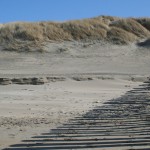Knowledge Networking Portal for Sustainable & Responsible Tourism










 Schouwen-Duiveland (NL)
Schouwen-Duiveland (NL)
| Contributor | DiegoNunez |
|---|---|
| Country | Netherlands, |
| Keywords |
|
| Release date | 26/06/2014 |
| Topics |
|
| GSTC Criteria for Destinations |
|
| Type |
|
| # | File name | Contributor | Release date | Uploaded by | Upload date | Size | Content type |
|---|
| Good Practice Innovation Sheet | ||||
 |
||||
| Items | Description | |||
| 1. WHO | ||||
| Key people and organisations (initiator, leader, partners) | Coastal and Marine Union EUCC and the Municipality of Schouwen-Duiveland | |||
| Key Figures | Surface | Inhabitants | Tourism arrivals | Tourism nights |
| 488.94 km2 | 34,152 | N/A | N/A | |
| 2. WHY | ||||
| Reason for taking the good practice action | Schouwen-Duiveland is a popular destination which receives thousands of tourists and day trippers in the summer months mainly attracted by its beaches. A high proportion these visitors drive their private cars to the main seaside resorts, thus leading to traffic congestion and parking problems in villages, and negative environmental impacts in dune areas. This has deteriorated both, the quality of life of its residents and the holiday experience for recreational visitors. It has therefore become necessary to implement a sustainable mobility model which helps to solve this issue. | |||
| Issues and challenge |
|
|||
| 3. HOW | ||||
| Methods /steps / tools used (to develop the good practice) | Concerned with these problems, the municipality has introduced an alternative transport service during the peak season (from May to September) aiming to reduce the use of private cars and improve the living environment. Tourists can park their cars free of charge at the Recreatietransferium park and ride (P+R), at the edge of Renesse, and be transferred for free to the beach and town by beach bus (with sand on the floor), cabriobus (without a roof) or covered wagon. There are also some hybrid mini-buses which ride on electricity when they are driven over the dunes.
The Renesse transferium contains 900 parking spaces. There are also free buses that drive from the Transferium to camping sites and beach entrances and back again, so camping guests can also use these buses for free. |
|||
| 4. RESULT | ||||
| Specific/measurable results, benefits | Since the beach shuttle service was established the number of people using this facility has increased considerably. This initiative has resulted to be highly appreciated among users. Annually between 250,000 and 400,000 visitors use this transport service. The introduction of this mobility option has helped to reduce the number of vehicles driving to the beach, improving the overall accessibility and the quality of life within the municipality. The transferium has contributed to decrease by 22% the parking pressure within the built-up area and by 36% at the beach.(Source: Hans Zuiver (2012) Park and Ride Renesse, The Netherlands. ELTIS-The urban Mobility Portal. Retrieved on May 24, 2013 from http://www.eltis.org/index.php?id=13&study_id=3654) | |||
| Recognitions (e.g. awards) | QualityCoast Gold Award 2013 | |||
| 5. REFLECTION | ||||
| Lessons learned | The active involvement of all the interested parties and the promotion and marketing of this service were also crucial to the success of this initiative. Implementing other measures such as reducing the number of parking places in the village and establishing car-free zones have also been determinant to persuade visitors to use these buses to travel to the centre and the beach of Renesse rather than using their own car. | |||
| Challenges met | ||||
| Critical success factors | Many factors have contributed to the success of the transferium, including the free service offered, its ease and comfort, and the quality of transport service in terms of speed and frequency. In addition, adapting the buses for tourists by, for example, removing the roof or putting sand on the floor has led users to consider these vehicles not only as an alternative transport option but also an attraction in itself. | |||
| 6. MORE | ||||
| web-references, documents | www.qualitycoast.info/?page_id=746 | |||














































